12 Top Seasonal Holidays Around The World
Seasonal holidays hold a special place in the hearts of people from diverse cultures and backgrounds, uniting them in a shared celebration of joy, heritage, and faith. These festive occasions are a testament to the rich tapestry of human traditions, reflecting the unique values and beliefs of each community. As the seasons change, so do the customs and rituals that mark these momentous events, creating a colorful mosaic of global celebrations.
Here are 12 Top Seasonal Holidays celebrated around the world.
Top Seasonal Holidays
Christmas (December 25th)
Christmas, celebrated on December 25th, is one of the most widely recognized and beloved holidays worldwide. Rooted in Christian traditions, it commemorates the birth of Jesus Christ, who is considered the central figure of Christianity. However, Christmas has transcended its religious origins and has become a global cultural phenomenon, embraced by people of various faiths and beliefs, making it a significant and cherished holiday for millions around the world.
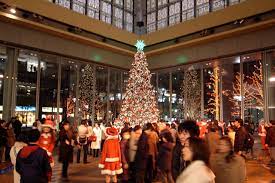
Origins and History: The origins of Christmas can be traced back to ancient pagan celebrations of the winter solstice, where various cultures marked the shortest day and longest night of the year with festivities and rituals. As Christianity spread, early Christians chose to adopt December 25th as the date to celebrate the birth of Jesus, possibly to coincide with existing celebrations and facilitate the conversion of pagans to Christianity.
Religious Significance: For Christians, Christmas holds immense religious significance as it marks the incarnation of Jesus Christ, the Son of God, in human form. The Nativity story, as described in the New Testament of the Bible, narrates the birth of Jesus in Bethlehem to the Virgin Mary and her husband, Joseph. According to Christian belief, Jesus was born in a manger, and angels proclaimed his birth to shepherds in the fields.
Traditions and Customs: Christmas is characterized by a myriad of traditions and customs that vary across different cultures and regions. Some of the most well-known customs include:
- Christmas Trees: Decorating evergreen trees with lights, ornaments, and garlands is a cherished tradition dating back centuries. The Christmas tree symbolizes life, renewal, and the light of Christ.
- Gift-Giving: Exchanging gifts is a central aspect of Christmas, inspired by the biblical account of the three wise men presenting gifts to baby Jesus. Today, gift-giving is a way to express love and appreciation for family and friends.
- Christmas Carols: Singing Christmas carols, both traditional and modern, is a joyous part of the holiday season. Carols often reflect the themes of peace, love, and goodwill.
- Santa Claus: The figure of Santa Claus, derived from St. Nicholas, has become a beloved icon of Christmas. Children around the world eagerly anticipate the arrival of Santa Claus, who is believed to bring gifts to well-behaved children on Christmas Eve.
- Nativity Scenes: Setting up Nativity scenes depicting the birth of Jesus is a common practice in homes, churches, and public spaces. These displays often include figurines of the Holy Family, shepherds, animals, and the Three Wise Men.
- Christmas Mass and Services: Attending Christmas Mass or church services is a central part of the celebration for Christians, providing a space for prayer, reflection, and worship.
Diwali (Festival of Lights)
Diwali, also known as the Festival of Lights, is one of the most significant and widely celebrated festivals in Hinduism. It holds immense cultural and religious importance for millions of people around the world, primarily in India, Nepal, and other South Asian countries. Diwali is a time of joy, togetherness, and spiritual significance, marking the triumph of light over darkness and good over evil.
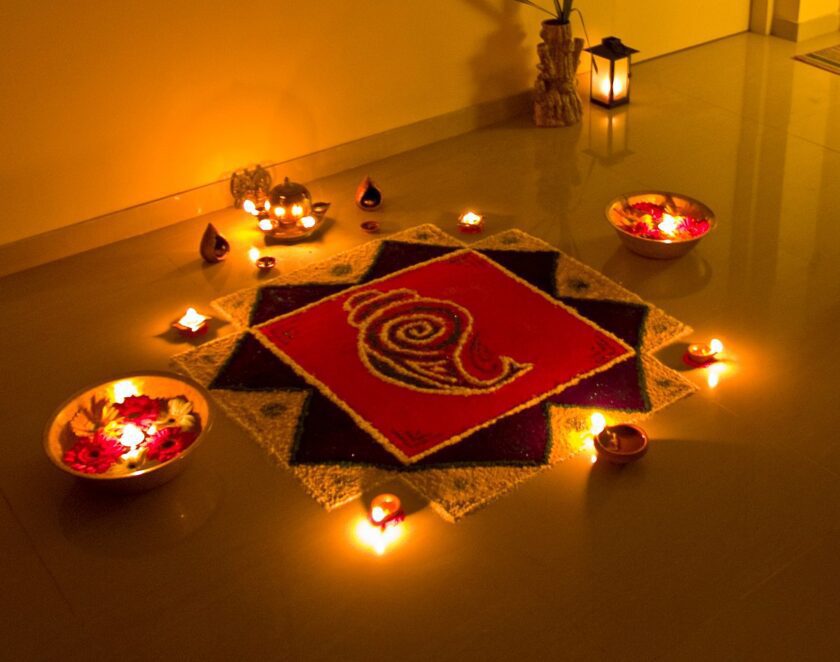
Origins and History: The origins of Diwali can be traced back to ancient Hindu scriptures, particularly the epic Ramayana. According to the Ramayana, Diwali commemorates the return of Lord Rama, along with his wife Sita and brother Lakshmana, to their kingdom of Ayodhya after 14 years of exile. The citizens of Ayodhya celebrated their return by lighting oil lamps (diyas) and illuminating the city, signifying the victory of righteousness and truth.
Religious Significance: For Hindus, Diwali holds profound religious significance. It is a time of expressing gratitude to the deities and seeking their blessings for prosperity and well-being. Goddess Lakshmi, the goddess of wealth and prosperity, is especially revered during this festival. Worshiping Goddess Lakshmi and Lord Ganesha, the remover of obstacles, is an integral part of Diwali celebrations.
Customs and Celebrations: Diwali is a five-day festival celebrated with great enthusiasm and excitement. The festivities commence on the 13th day of the dark fortnight of the Hindu month Ashwin (usually in October or November) and continue until the second day of the bright fortnight of Kartika.
- Day 1 – Dhanteras: The first day of Diwali is dedicated to Goddess Lakshmi, with people purchasing new items, especially gold and silver, as a symbol of prosperity.
- Day 2 – Naraka Chaturdashi: On this day, people take a bath before sunrise, followed by the application of aromatic oils, to symbolize the cleansing of impurities. It also commemorates the victory of Lord Krishna over the demon Narakasura.
- Day 3 – Diwali: The main day of Diwali, it is marked by decorating homes with oil lamps (diyas), candles, and colorful rangoli patterns to welcome Goddess Lakshmi and invite prosperity into their homes.
- Day 4 – Govardhan Puja: Also known as Annakut, this day is dedicated to Lord Krishna, who is worshiped with offerings of food and prayers of gratitude.
- Day 5 – Bhai Dooj: The final day of Diwali, Bhai Dooj, celebrates the bond between siblings. Sisters perform aarti (ritual of light) for their brothers’ well-being and receive gifts in return.
Fireworks and Crackers: Fireworks and firecrackers are an integral part of Diwali celebrations. The colorful explosions and bright lights symbolize the triumph of light over darkness and are believed to ward off evil spirits.
Feasting and Sweets: Diwali is a time of indulgence in delectable traditional sweets and savory dishes. Families and friends come together to share festive meals, exchange sweets, and visit each other’s homes, strengthening bonds and fostering a sense of community.
Unity and Celebration: Diwali serves as a unifying force, bringing people from diverse backgrounds together in a spirit of joy and camaraderie. The festival transcends religious boundaries and is celebrated by people of various faiths, fostering an atmosphere of inclusivity and respect.
In conclusion, Diwali is a vibrant and joyous festival that illuminates the hearts of millions with the warmth of light and the spirit of unity. With its rich cultural heritage and deep religious significance, Diwali remains a time of renewal, hope, and a reaffirmation of the timeless values of love, compassion, and goodness that hold humanity together. As the Festival of Lights, Diwali continues to inspire and bring people together in the celebration of life’s abundant blessings.
Chinese New Year (Lunar New Year)
Chinese New Year, also known as Lunar New Year or Spring Festival, is one of the most important and widely celebrated festivals in Chinese culture. It marks the beginning of the lunar new year and is observed by millions of people around the world, primarily in China, Hong Kong, Taiwan, and other East Asian countries with significant Chinese communities. The festival’s vibrant customs and traditions carry profound cultural and historical significance, symbolizing renewal, family reunion, and the hope for a prosperous year ahead.
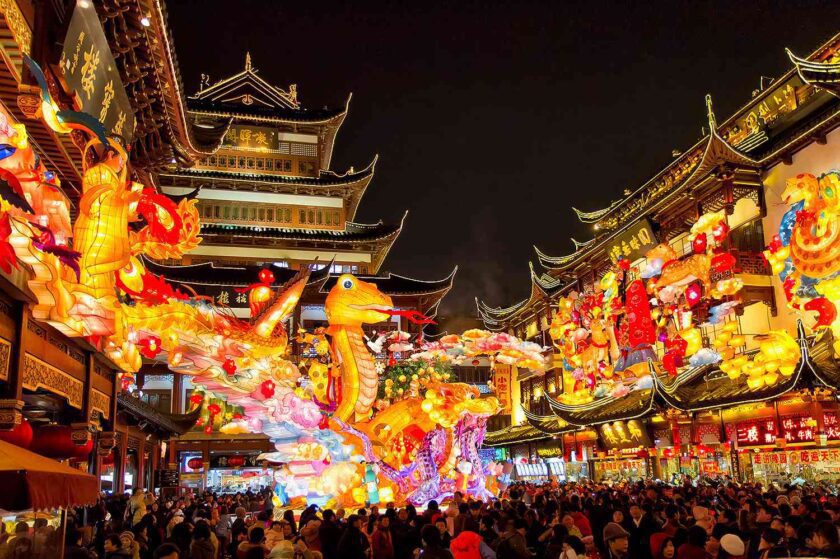
Lunar Calendar and Zodiac Animals: Chinese New Year follows the lunar calendar, which is based on the cycles of the moon. As a result, the date of the festival varies each year, falling between January 21st and February 20th in the Gregorian calendar. Each Chinese New Year is associated with one of the 12 animals from the Chinese zodiac: Rat, Ox, Tiger, Rabbit, Dragon, Snake, Horse, Goat, Monkey, Rooster, Dog, and Pig. These zodiac animals rotate in a 12-year cycle, with each year having distinct characteristics and symbolism.
Preparations and Cleaning: In the weeks leading up to Chinese New Year, families engage in extensive preparations to usher in the auspicious occasion. Homes are thoroughly cleaned to sweep away bad luck and make way for good fortune. Decorations featuring the color red, which symbolizes luck and prosperity, adorn houses and streets. Images of the Chinese character “福” (Fu), meaning good fortune, are displayed on doorways to welcome blessings.
Reunion and Family Traditions: Chinese New Year is a time for family reunion, and people travel from far and wide to be with their loved ones. The festive season often sees the largest annual human migration, with millions of people returning to their hometowns for the celebrations. Family gatherings and elaborate feasts are common during this time, with traditional dishes holding symbolic meanings of abundance, longevity, and happiness.
Red Packets (Hongbao): One of the most anticipated customs during Chinese New Year is the giving of red packets, also known as “hongbao” or “lai see.” These small red envelopes contain money and are presented as gifts to children and unmarried individuals as a gesture of good luck and blessings for the coming year.
Lion and Dragon Dances: Colorful lion and dragon dances are a highlight of Chinese New Year celebrations. Dancers in vibrant costumes perform these traditional dances on the streets, in homes, and at various public events. The lively performances are believed to bring good luck and scare away evil spirits.
Fireworks and Firecrackers: Fireworks and firecrackers are an integral part of Chinese New Year festivities. The loud noises and bright lights are believed to ward off evil spirits and bring good luck. However, like with other festivals, concerns about air pollution and safety have led to restrictions on fireworks in some cities.
Temple Visits and Prayers: During Chinese New Year, people visit temples and offer prayers to deities, seeking blessings for prosperity, health, and happiness in the new year. It is also a time for paying respect to ancestors and seeking their guidance.
Spring Festival Gala and Cultural Performances: In China, the Spring Festival Gala, a televised variety show, is a must-watch for families during Chinese New Year. It features music, dance, comedy, and other performances that showcase the country’s rich cultural heritage.
Chinese New Year is a time of profound cultural significance, marked by joyous celebrations, heartfelt traditions, and a sense of unity among families and communities. It embodies the spirit of hope, renewal, and the belief in the potential for a bright and prosperous future. As the world’s most significant traditional Chinese holiday, Lunar New Year serves as a reminder of the enduring values of family, respect for ancestors, and the power of unity that have shaped Chinese culture for millennia.
Hanukkah (Chanukah)
Hanukkah, also known as Chanukah, is an important Jewish festival celebrated worldwide. It spans eight days and nights and is observed in the Hebrew month of Kislev, which typically falls in November or December of the Gregorian calendar. Hanukkah is a joyous occasion that commemorates the rededication of the Second Temple in Jerusalem and the miracle of the oil that lasted for eight days.
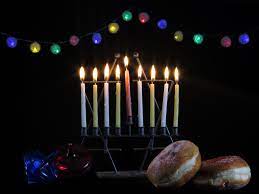
Historical Background: The origins of Hanukkah can be traced back to the 2nd century BCE when Judea was under the rule of the Seleucid King Antiochus IV. The king imposed harsh restrictions on the practice of Judaism and desecrated the Second Temple in Jerusalem. In response, a group of Jewish rebels, known as the Maccabees, rose up against the oppressive regime.
The Miracle of the Oil: The victory of the Maccabees culminated in the recapture and purification of the Second Temple. According to Jewish tradition, when they sought to relight the menorah (a seven-branched candelabrum), they found only a small amount of pure olive oil that could last for just one day. However, miraculously, the oil burned for eight days, long enough for a new supply of oil to be prepared. This event is at the heart of the Hanukkah celebration and serves as a symbol of divine providence and the triumph of light over darkness.
The Lighting of the Menorah: The central ritual of Hanukkah is the lighting of the menorah, also known as the hanukkiah. The hanukkiah has nine branches – one for each night of Hanukkah and an additional branch, the “shamash” (helper), used to light the other candles. On each night of Hanukkah, one more candle is lit until all eight candles are kindled, with the shamash always lit first. The menorah is placed in a prominent location, such as a window or doorway, to publicize the miracle.
Dreidel Game: A traditional Hanukkah pastime is playing the dreidel game. The dreidel is a four-sided spinning top with Hebrew letters on each side, representing the phrase “Nes Gadol Haya Sham,” meaning “A great miracle happened there.” Players take turns spinning the dreidel and follow instructions based on the letter that lands face-up. The game often involves using chocolate coins, known as gelt, as a form of currency.
Fried Foods: Hanukkah is also associated with the custom of eating fried foods, particularly dishes cooked in oil, to commemorate the miracle of the oil. Latkes, which are potato pancakes, and sufganiyot, which are jelly-filled doughnuts, are among the most popular Hanukkah treats.
Gift-Giving: In some regions, particularly in Western cultures, the practice of giving gifts has been incorporated into Hanukkah celebrations, inspired by the proximity of the festival to the Christmas season. This tradition provides an opportunity for families to exchange presents and enjoy the festive spirit.
Hanukkah is a time of joy, dedication, and celebration, symbolizing the resilience of the Jewish people and their commitment to preserving their faith and traditions. The festival holds deep significance as a reminder of the importance of religious freedom and the enduring values of hope, perseverance, and unity. Through the lighting of the menorah and the observance of cherished customs, Hanukkah continues to be a meaningful and cherished festival that brings families and communities together in a spirit of joy and togetherness.
Easter
Easter is a Christian festival that holds immense religious significance as it commemorates the resurrection of Jesus Christ from the dead. It is one of the most important events in the Christian calendar and is celebrated by millions of Christians around the world. Easter represents the pinnacle of the Christian faith and symbolizes hope, redemption, and new beginnings.

Origins and History: The origins of Easter can be traced back to the early Christian church and its connection to the Jewish holiday of Passover. According to Christian belief, Jesus Christ was crucified on Good Friday and buried, and on the third day, which is Easter Sunday, he rose from the dead, overcoming death and offering salvation to believers.
Religious Significance: For Christians, Easter is a time of deep spiritual reflection and joyous celebration. It reaffirms their belief in the resurrection of Jesus Christ, which is seen as a central tenet of Christianity. The resurrection represents the victory of life over death and the promise of eternal life for those who have faith in Jesus as their savior.
Observance and Traditions: Easter is observed with a variety of traditions and customs that differ among Christian denominations and cultural practices. Some of the most common Easter traditions include:
- Good Friday: The Friday before Easter Sunday is known as Good Friday, commemorating the crucifixion of Jesus Christ. Many Christians attend church services and engage in prayer and reflection on this solemn day.
- Easter Vigil: In the Roman Catholic and some other Christian traditions, an Easter Vigil is held on the Saturday evening before Easter Sunday. It is a significant liturgical celebration that includes the lighting of the Paschal candle, readings from the Bible, and the celebration of baptisms and confirmations.
- Easter Sunday: Easter Sunday is the central day of celebration, marking the resurrection of Jesus Christ. Christian churches hold special Easter services, which are often filled with music, hymns, and messages of hope and renewal.
- Easter Eggs: Eggs have become a prominent symbol of Easter, representing new life and rebirth. Decorating and hunting for Easter eggs are cherished traditions, especially for children. In many cultures, the eggs are dyed and decorated in vibrant colors.
- Easter Bunny: The Easter Bunny is a popular figure in Easter folklore, often depicted as a rabbit who brings eggs and treats to children. The association of the bunny with Easter likely stems from its prolific breeding and symbolizes fertility and new life.
- Easter Feast: Like other major holidays, Easter is often celebrated with a festive meal shared with family and friends. Traditionally, certain dishes, such as lamb and hot cross buns, hold religious symbolism.
Unity and Hope: Easter serves as a unifying force for Christians, transcending denominational differences and bringing believers together in the shared belief in the resurrection of Jesus Christ. It fosters a sense of hope, renewal, and the promise of redemption, providing spiritual comfort to those facing challenges and difficulties in life.
Easter is not only a religious festival but also a time for families and communities to come together, share joy, and strengthen bonds of love and friendship. It exemplifies the values of faith, compassion, and the celebration of life’s greatest gift—the promise of eternal life through the resurrection of Jesus Christ.
Thanksgiving
Thanksgiving is a significant and cherished holiday celebrated primarily in the United States and Canada. It holds cultural and historical importance and is observed as a day of gratitude, reflection, and communal celebration. Thanksgiving is a time for family and friends to come together, share a festive meal, and express thanks for the blessings and abundance in their lives.
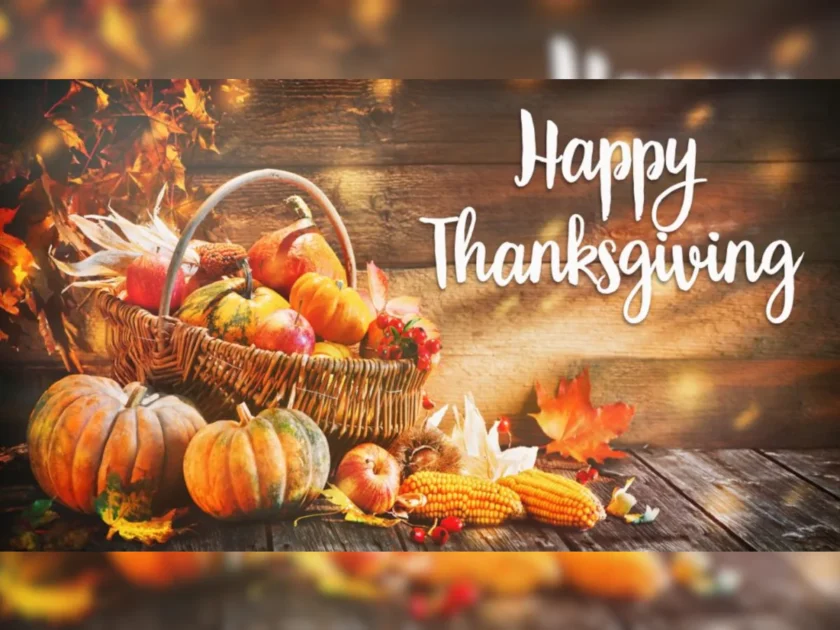
Origins and History: The origins of Thanksgiving in the United States can be traced back to the early 17th century. In 1621, the Pilgrims, early English settlers in Plymouth, Massachusetts, celebrated their successful harvest with a three-day feast, inviting the Wampanoag Native Americans who had helped them survive their first year in the New World. This event is considered one of the first Thanksgiving gatherings in North America.
In the following years, various colonies and communities held occasional thanksgiving celebrations to express gratitude for bountiful harvests, successful endeavors, and religious blessings. It was not until President Abraham Lincoln’s proclamation in 1863 during the Civil War that Thanksgiving became an official national holiday in the United States, set to be observed on the fourth Thursday of November.
Thanksgiving in Canada has a separate history, with origins dating back to the early 16th century when European explorers and settlers arrived in the region. Thanksgiving in Canada is observed on the second Monday of October and is also a time to give thanks for the harvest and blessings of the past year.
Traditions and Celebrations: Thanksgiving is characterized by several beloved customs and traditions:
- Thanksgiving Meal: The centerpiece of Thanksgiving celebrations is the Thanksgiving meal, often featuring a roasted turkey as the main dish. Families gather around the table to enjoy a feast that includes various side dishes, such as stuffing, mashed potatoes, cranberry sauce, vegetables, and pumpkin pie for dessert.
- Family Reunion: Thanksgiving is a time for family reunions, with many people traveling long distances to be with their loved ones. It is a cherished opportunity for families to come together, share stories, and create lasting memories.
- Giving Thanks: An essential aspect of Thanksgiving is expressing gratitude for the blessings and abundance in life. Many families take turns sharing what they are thankful for during the meal or participate in prayer or grace before eating.
- Parades: In the United States, particularly in New York City, the Macy’s Thanksgiving Day Parade is a beloved tradition. This parade features giant balloons, floats, marching bands, and performances, attracting millions of viewers both in person and on television.
- Football: Football has become synonymous with Thanksgiving Day in the United States. Many people watch football games, either attending matches in person or tuning in on television.
- Volunteer and Charity Work: Some individuals and families participate in volunteer activities and charity work during Thanksgiving as a way of giving back to the community and helping those in need.
Unity and Gratitude: Thanksgiving fosters a sense of unity and togetherness as people come together to celebrate, share, and express thanks. It serves as a reminder of the importance of gratitude, compassion, and generosity, encouraging people to appreciate the blessings in their lives and extend a helping hand to others.
In conclusion, Thanksgiving is a heartwarming and cherished holiday that symbolizes gratitude, unity, and the spirit of giving. It provides an opportunity for people to pause and reflect on the blessings in their lives, appreciate the company of loved ones, and celebrate the joys of togetherness. As a time-honored tradition, Thanksgiving continues to hold a special place in the hearts of people in the United States, Canada, and beyond, exemplifying the timeless values of thankfulness and love.
Holi (Festival of Colors)
Holi, also known as the Festival of Colors, is a vibrant and exuberant festival celebrated primarily in India and Nepal, as well as by Hindu communities around the world. It marks the arrival of spring and is observed on the full moon day in the Hindu month of Phalguna, which typically falls in March. Holi is a time of joy, unity, and the triumph of good over evil, as well as a celebration of love, friendship, and the spirit of togetherness.
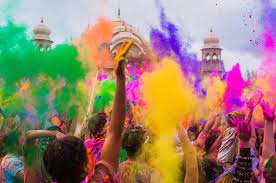
Origins and Historical Significance: The origins of Holi can be traced back to Hindu mythology and ancient texts. One of the most popular legends associated with Holi is the story of Prahlada, a young devotee of Lord Vishnu, and his evil aunt, Holika. According to the legend, Holika attempted to burn Prahlada alive in a bonfire, but her plan backfired due to the protective powers of Lord Vishnu, and Prahlada emerged unscathed. This event is celebrated on the eve of Holi as Holika Dahan, with bonfires lit to symbolize the victory of good over evil.
Another legend associated with Holi is the story of Lord Krishna, who is said to have played Holi with his beloved Radha and other gopis (cowherd girls) in the town of Vrindavan. Their playful and colorful celebrations became the inspiration for the joyful and exuberant aspect of Holi.
Customs and Celebrations: Holi is a two-day festival in many parts of India, with each day having its own significance.
- Holika Dahan: On the first day, people gather around bonfires in the evening to perform Holika Dahan. Effigies of Holika and sometimes other demons are burnt to symbolize the destruction of evil and the triumph of good.
- Rangwali Holi: The second day is known as Rangwali Holi or Dhulandi, which is the main day of the festival. People gather in public spaces and streets, armed with colored powders (gulal) and water-filled balloons (pichkaris), and playfully drench each other in a rainbow of colors. The joyous revelry of smearing colors on friends and strangers alike signifies the breaking down of social barriers and fostering a sense of unity and equality.
- Sweets and Treats: During Holi, families prepare and share a variety of traditional sweets and savory snacks. Gujiya, a sweet dumpling filled with khoya (milk solids) and nuts, is a popular Holi delicacy.
- Music and Dance: Holi is celebrated with music, dance, and singing, with people often performing traditional folk dances and songs.
Unity and Joy: Holi is a festival that transcends social and cultural boundaries, uniting people of all ages and backgrounds. It is a time to forget differences, forgive past grievances, and celebrate the joy of life with loved ones and neighbors. Holi’s playful spirit and vibrant colors signify the arrival of spring and the renewal of life, encouraging people to let go of negativity and embrace positivity and love.
Global Observance: In recent years, Holi’s popularity has grown beyond South Asia, and it is now celebrated by communities around the world. Many cities host Holi festivals and events, attracting people from diverse backgrounds who come together to experience the joyous festivities and partake in the colorful celebrations.
In conclusion, Holi, the Festival of Colors, is a jubilant and cherished festival that radiates with the essence of joy, love, and togetherness. It symbolizes the victory of good over evil, the advent of spring, and the celebration of unity and friendship. As one of the most colorful and exuberant festivals in the world, Holi continues to captivate the hearts of millions, fostering a sense of harmony and shared celebration among people of different cultures and backgrounds.
Ramadan
Ramadan is a significant and sacred month in Islam, observed by Muslims around the world as a time of fasting, prayer, reflection, and community. It is the ninth month of the Islamic lunar calendar and is considered the holiest period for Muslims. Ramadan holds great spiritual and religious importance as it commemorates the revelation of the first verses of the Quran to the Prophet Muhammad.

Origins and Historical Significance: The origins of Ramadan can be traced back to the year 610 CE when the Quran, the holy book of Islam, began to be revealed to Prophet Muhammad by the Angel Gabriel during the month of Ramadan. The exact date of the revelation is believed to have been Laylat al-Qadr (the Night of Decree), one of the last ten nights of Ramadan, which is considered the most auspicious and spiritually significant night of the year.
Fasting during Ramadan: One of the primary observances of Ramadan is fasting, known as Sawm in Arabic. From dawn until sunset each day during the month, Muslims abstain from consuming food, drink, smoking, and engaging in intimate relations. Fasting is an act of worship and self-discipline that helps Muslims focus on spiritual growth, empathy for the less fortunate, and strengthening their relationship with Allah (God).
Iftar and Suhoor: The fasting day is bookended by two essential meals: Suhoor, the pre-dawn meal before the fast begins, and Iftar, the meal to break the fast at sunset. Suhoor is an early morning meal consumed before the Fajr prayer (dawn), providing sustenance for the day. Iftar is a moment of celebration and community as families and friends come together to break their fast, often with dates and water followed by a wholesome meal.
Prayer and Reflection: Ramadan is also a time for increased prayer and spiritual reflection. Muslims engage in additional daily prayers, such as Tarawih, special evening prayers held in mosques during Ramadan. Recitation of the Quran and seeking forgiveness for past sins are also central to the observance of the month.
Charity and Giving: Charity and giving are integral to Ramadan as Muslims are encouraged to engage in acts of kindness, generosity, and philanthropy. One of the pillars of Islam is Zakat, the mandatory giving of a portion of one’s wealth to those in need. Many Muslims choose to pay their Zakat during Ramadan to multiply their rewards.
Laylat al-Qadr: Laylat al-Qadr, often translated as the Night of Decree or Night of Power, falls within the last ten nights of Ramadan, particularly on the 27th night. It is believed that on this night, the Quran was first revealed, and it holds immense spiritual significance. Muslims spend the night in prayer, seeking blessings and forgiveness, as it is considered a time of great spiritual opportunity and reward.
Eid al-Fitr: At the end of Ramadan, Muslims celebrate Eid al-Fitr, the Festival of Breaking the Fast. It is a joyous occasion marked by communal prayers, feasting, and festive activities. Muslims dress in their finest attire, exchange greetings, and give gifts to loved ones. Eid al-Fitr is a time of gratitude, unity, and rejoicing for the spiritual growth achieved during Ramadan.
Songkran
Songkran, also known as the Thai New Year, is one of the most significant and widely celebrated festivals in Thailand. It marks the beginning of the traditional Thai lunar calendar and is observed from April 13 to April 15 each year. Songkran is a time of joyous festivities, religious ceremonies, water-related activities, and community gatherings, symbolizing renewal, purification, and the spirit of togetherness.
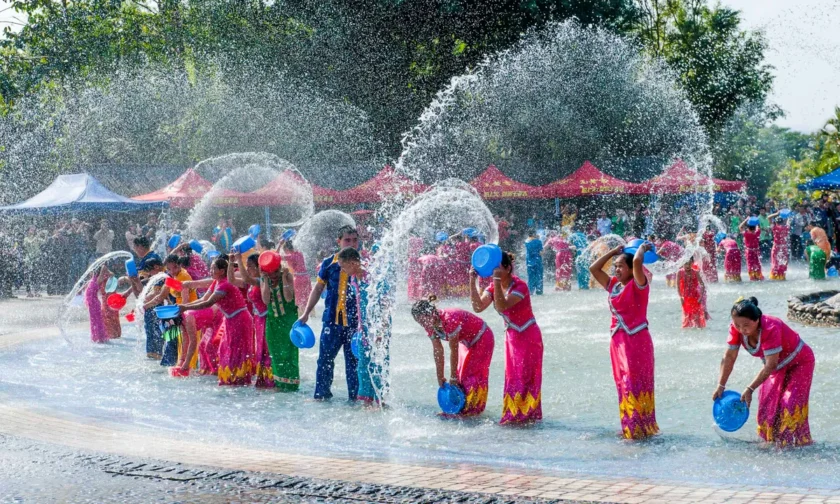
Origins and Cultural Significance: The origins of Songkran can be traced back to ancient agricultural and astrological traditions in Southeast Asia. The festival is rooted in Hindu beliefs and was adapted by the Thai people to incorporate Buddhist customs over time. It coincides with the transition of the sun from the zodiac sign of Pisces to Aries, signifying the end of one year and the beginning of a new year.
Water Festival: One of the most distinct features of Songkran is the playful water festival that takes place during the three-day celebration. Traditionally, water is considered a symbol of purification and renewal, and during Songkran, people engage in friendly water fights and sprinkle water on each other as a way to cleanse and offer blessings for the New Year.
Street Water Fights: In modern times, Songkran has become synonymous with street water fights, especially in major cities and tourist destinations across Thailand. People armed with water guns, buckets, and hoses enthusiastically spray water at one another and passersby, creating a festive and joyous atmosphere.
Blessing Ceremonies: Songkran is also a time for spiritual observances and religious ceremonies. Many Thais visit temples to offer prayers, receive blessings from monks, and perform traditional rituals, such as pouring water over Buddha statues as a sign of respect and gratitude.
Family Reunions and Traditions: During Songkran, families come together for reunions, meals, and cultural activities. It is a time to pay respects to elders and receive their blessings. Homes are cleaned and decorated with flowers and offerings for good luck and prosperity in the coming year.
Songkran Parades and Cultural Events: Songkran parades and cultural events are organized in many cities and towns, showcasing traditional Thai dances, music, and performances. Colorful processions featuring elaborate floats and traditional costumes add to the festive ambiance.
Global Observance: In recent years, Songkran has gained popularity beyond Thailand, attracting tourists from around the world who come to experience the unique and vibrant festivities. Many countries with a significant Thai community also observe Songkran, keeping alive the cherished traditions and cultural heritage.
In conclusion, Songkran is a cherished and exuberant festival that embodies the spirit of renewal, purification, and togetherness in Thailand. It is a time for rejoicing, water play, religious observance, and family gatherings, symbolizing the transition from one year to the next. As one of the most vibrant and enjoyable festivals in Southeast Asia, Songkran continues to captivate both locals and visitors, fostering a sense of unity, joy, and cultural pride in the Land of Smiles.
Vesak (Buddha Purnima)
Vesak, also known as Buddha Purnima, is one of the most important and sacred festivals for Buddhists around the world. It commemorates the birth, enlightenment (nirvana), and passing away (parinirvana) of Gautama Buddha, the founder of Buddhism. Vesak is observed on the full moon day in the month of Vesakha (usually in May) in the Buddhist lunar calendar. It is a time of reverence, reflection, and spiritual celebration, symbolizing the teachings and legacy of Buddha.
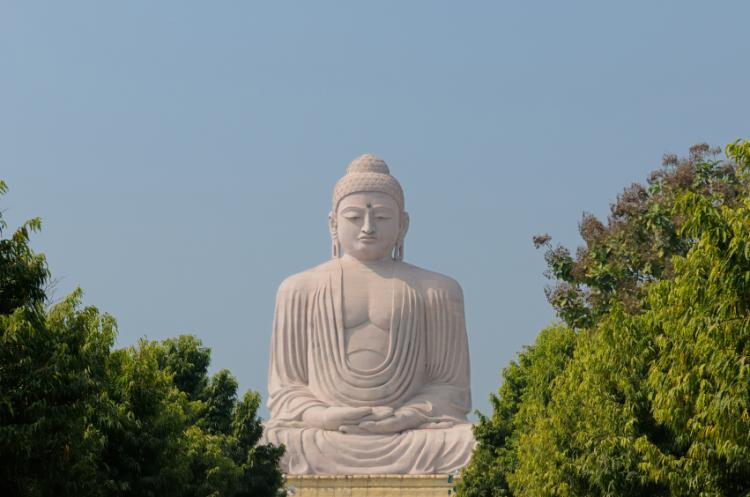
Origins and Historical Significance: Vesak has its origins in ancient India and dates back over 2,500 years to the lifetime of Gautama Buddha. According to Buddhist scriptures, Gautama Buddha was born on the full moon day in the month of Vesakha in Lumbini, a region in present-day Nepal. He attained enlightenment (nirvana) under the Bodhi tree in Bodh Gaya, India, and later passed away in Kushinagar, India, on the same day.
Triple Blessings: The significance of Vesak is threefold, representing the three most important events in the life of Gautama Buddha: his birth, enlightenment, and passing away. Buddhists believe that these three events occurred on the same day of the year, which adds to the spiritual significance and reverence of Vesak.
Observance of Vesak: Vesak is observed with great devotion and enthusiasm by Buddhists of various traditions worldwide. The day typically begins with devotees gathering at temples and monasteries to participate in special prayers, meditation sessions, and Dhamma talks (sermons) conducted by Buddhist monks and nuns.
Offerings and Acts of Merit: During Vesak, Buddhists make offerings of flowers, incense, candles, and food to honor Buddha and the teachings of Buddhism. Acts of merit, such as giving alms to monks, engaging in acts of charity, and releasing animals as a symbol of compassion, are encouraged on this auspicious day.
Bathing the Buddha: A popular ritual on Vesak is the ceremonial bathing of the Buddha statue, symbolizing the purification of the mind and spirit. Devotees pour scented water over Buddha statues as a gesture of respect and to commemorate the occasion when celestial beings are believed to have bathed the newborn Buddha.
Lanterns and Decorations: Temples and homes are adorned with colorful lanterns, flags, and decorations during Vesak. In some countries, processions with beautifully decorated floats carrying Buddha statues are held, creating a festive and vibrant ambiance.
Observance Around the World: Vesak is celebrated with great fervor in countries with significant Buddhist populations, such as Sri Lanka, Thailand, Myanmar, Cambodia, and Nepal. It is also observed in countries with Buddhist communities, including Japan, South Korea, Vietnam, Malaysia, and Singapore.
Universal Message of Vesak: Vesak transcends cultural and geographical boundaries, carrying a universal message of peace, compassion, and enlightenment. The teachings of Buddha, which emphasize the importance of non-violence, loving-kindness, and selfless compassion, serve as an inspiration for people of all backgrounds and beliefs.
Halloween (October 31st)
Halloween is a popular and festive holiday celebrated in many countries around the world on October 31st. It is a time of fun, spookiness, and community gatherings, with traditions that blend ancient Celtic customs with modern elements. Halloween’s origins can be traced back to ancient Celtic festivals, particularly the Gaelic festival of Samhain, which marked the end of the harvest season and the beginning of winter.

Origins and Historical Significance: The roots of Halloween can be traced to the Celtic festival of Samhain, celebrated by the ancient Celts over 2,000 years ago in what is now Ireland, the United Kingdom, and northern France. Samhain marked the end of the harvest season and the beginning of the darker half of the year. The Celts believed that on the night of October 31st, the boundary between the living and the spirit world was blurred, allowing ghosts and spirits to roam the earth.
Costumes and Masks: One of the most iconic aspects of Halloween is the tradition of wearing costumes and masks. The ancient Celts would wear costumes made from animal hides and masks to disguise themselves and avoid being recognized by the roaming spirits. Today, Halloween costumes range from spooky and creepy to cute and humorous, with people dressing up as ghosts, witches, superheroes, monsters, and various other characters.
Trick-or-Treating: Trick-or-treating is a beloved Halloween tradition where children, often accompanied by adults, go from house to house in their neighborhoods, knocking on doors and saying, “Trick or treat!” In return, they receive candies, sweets, or small treats from the homeowners. The practice of trick-or-treating is believed to have originated from the medieval custom of “souling,” where poor people would go door to door on All Souls’ Day (November 2nd) to receive food in exchange for prayers for the souls of the deceased.
Jack-o’-Lanterns: Jack-o’-lanterns are carved pumpkins with a light source inside, usually a candle. The tradition of carving pumpkins originated from an Irish folktale about “Stingy Jack,” who was doomed to roam the earth with only a carved-out turnip with a burning coal inside to light his way. When Irish immigrants brought the tradition to America, they began using pumpkins instead of turnips due to their abundance and larger size.
Haunted Houses and Parties: During Halloween, many people enjoy visiting haunted houses, where they encounter spooky and eerie settings filled with surprises and scares. Halloween parties are also a common way to celebrate the holiday, with friends and family gathering for festive activities, games, and themed decorations.
Global Observance: Halloween’s popularity has grown beyond its Celtic origins and is now celebrated in various countries around the world. While the customs and traditions may differ, the spirit of Halloween remains consistent, bringing people together for a night of fun, creativity, and playful scares.
In conclusion, Halloween is a festive and exciting holiday celebrated with enthusiasm and creativity in many parts of the world. Its origins in ancient Celtic traditions have evolved into a modern celebration characterized by costumes, trick-or-treating, jack-o’-lanterns, and spooky fun. Whether through traditional customs or contemporary festivities, Halloween continues to captivate people of all ages, fostering a sense of community and imaginative playfulness on this night of thrills and chills.
Bastille Day (July 14th – France)
Bastille Day, also known as La Fête Nationale (The National Celebration) or Le 14 Juillet (July 14th) in French, is the national day of France, celebrated annually on July 14th. It is a day of great historical and cultural significance, marking the beginning of the French Revolution and the storming of the Bastille, a fortress-prison in Paris, in 1789.
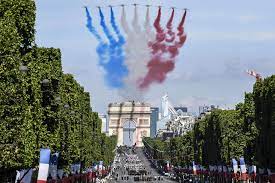
Historical Significance: Bastille Day commemorates the storming of the Bastille, which occurred on July 14, 1789. At that time, France was facing economic crisis, social unrest, and political discontent, leading to widespread dissatisfaction with the monarchy and the unequal distribution of power. On July 14th, a large crowd of Parisians stormed the Bastille, a symbol of royal authority and oppression, to demand the release of political prisoners and to protest against the monarchy’s absolute rule. The storming of the Bastille is considered a pivotal moment that marked the beginning of the French Revolution, leading to the eventual overthrow of the monarchy and the establishment of a republic in France.
National Celebration: Bastille Day is celebrated throughout France with great enthusiasm and patriotism. The day is filled with a variety of events, parades, fireworks, concerts, and festivities that bring people together to commemorate the country’s rich history and cultural heritage.
Military Parade in Paris: One of the main highlights of Bastille Day is the grand military parade held on the Champs-Élysées in Paris. The parade showcases the French military’s strength and unity and includes impressive displays of troops, tanks, aircraft, and military equipment. It is a symbol of national pride and pays tribute to the country’s armed forces.
Fireworks and Festivals: In the evening, magnificent fireworks displays light up the skies across France. Spectacular firework shows are held in cities and towns, attracting locals and tourists alike. The celebrations also include street parties, live music performances, dance events, and outdoor festivities, creating a festive and joyous atmosphere.
Bastille Day Celebrations Worldwide: The spirit of Bastille Day extends beyond France, with French communities and embassies around the world hosting events to mark the occasion. Various countries, especially former French colonies, also observe Bastille Day as a tribute to France’s historical influence and cultural ties.
Unity and National Identity: Bastille Day holds immense significance in fostering a sense of national unity and pride among the French people. It is a time for reflection on the country’s history, values, and ideals, emphasizing the principles of liberty, equality, and fraternity that were central to the French Revolution.
Symbol of Freedom and Democracy: Bastille Day represents more than just a historical event; it is a symbol of freedom, democracy, and the triumph of the people’s will over tyranny. The celebration embodies the enduring spirit of the French nation and its commitment to upholding the principles of liberty and justice.
In conclusion, Bastille Day is a momentous occasion that celebrates the birth of modern France and the principles of liberty, equality, and fraternity. It is a day of national pride, unity, and cultural festivities that brings the French people together to honor their history and heritage. Bastille Day not only commemorates a significant historical event but also serves as a powerful symbol of freedom, democracy, and the enduring spirit of the French nation.
The Ultimate Guide: 12 Crucial Factors to Consider Before Buying a Laptop
Discover the Best Tyre Brands in the USA: Our Top Picks



